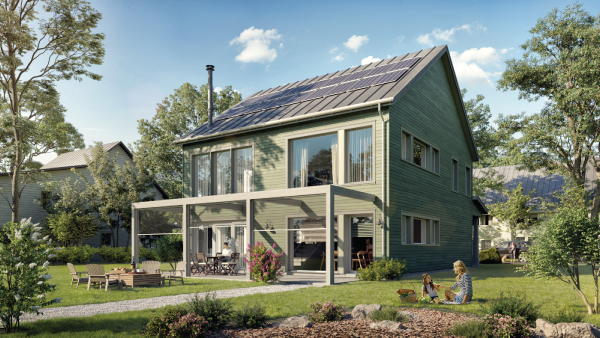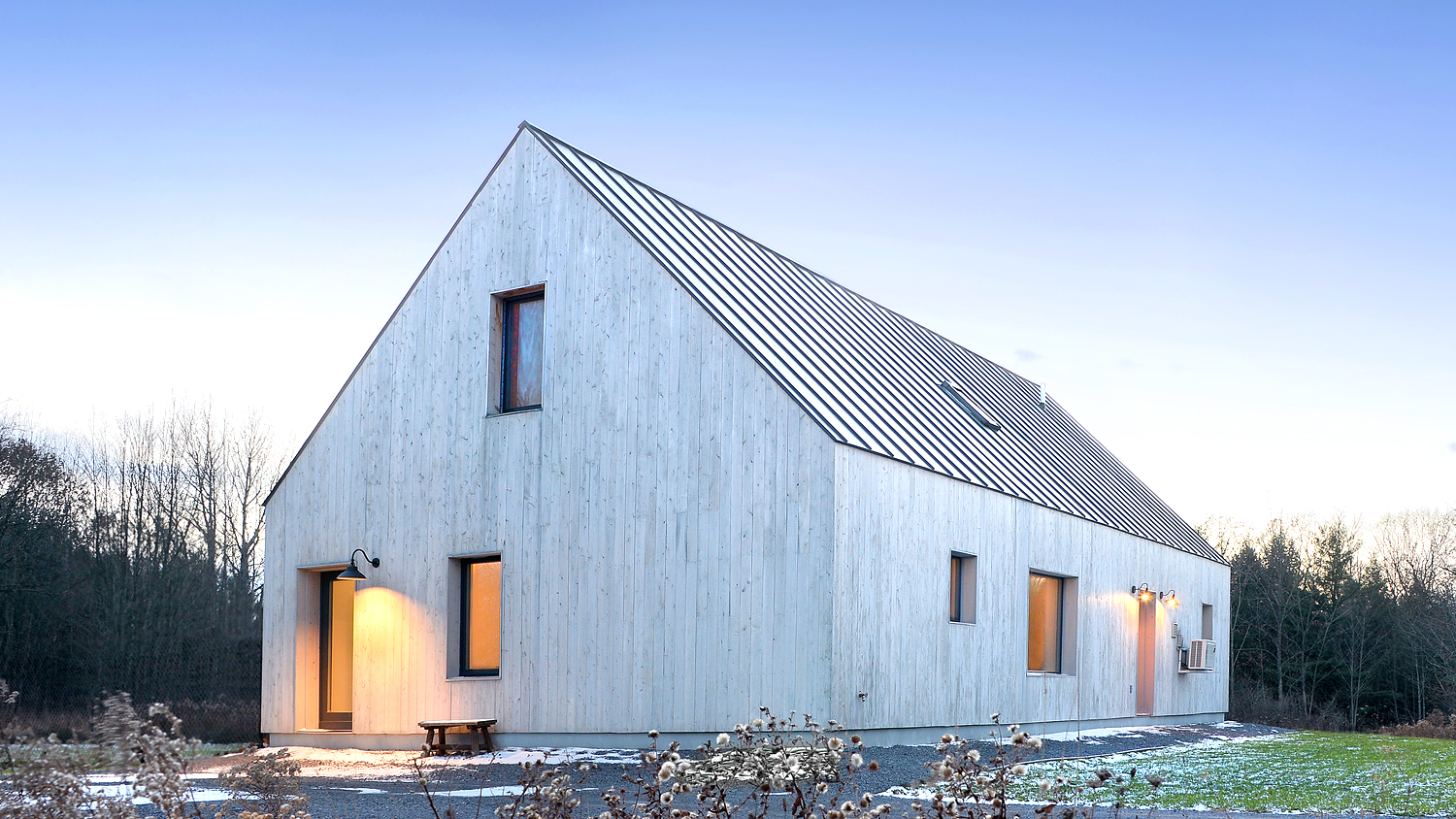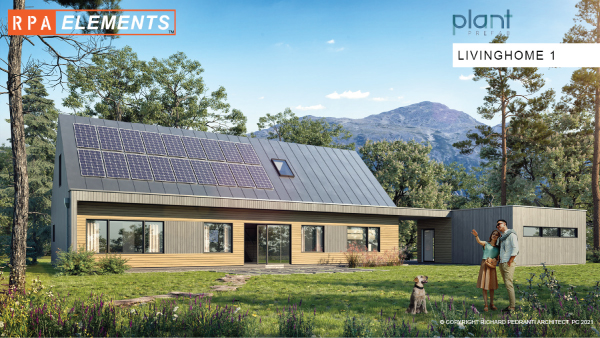
WHAT'S A PASSIVE HOUSE
Imagine living in a comfortable, modern house with no cold drafts, no temperature variations from room to room and, astoundingly, virtually no heating or cooling bills. It might sound too good to be true, but these pleasant conditions are the norm for people who live in a Passive House.
Keffer Passive House
“Maximize your gains, minimize your losses”
These are the basic tenants of the Passive House approach. A Passive House project maximizes the energy efficiency of the basic components inherent in all buildings: the roof, walls, windows, floors and utility systems. By minimizing a building’s energy losses with smart insulation, the heating and cooling system is not called on nearly as frequently, saving resources and operating costs, while reducing the homes impact on the environment. Unlike any other structures, Passive House buildings maintain occupant comfort for more hours of the year without relying on active heating and air-conditioning equipment.
Soeder Passive House
With a history of inexpensive fuel and undisciplined construction techniques, there has been little need to consider the impact of energy losses through poorly engineered building enclosures. Typical construction is plagued with low levels of insulation, high air infiltration, and thermal bridging between interior and exterior. Today’s enlightened homeowner is seeking a new approach for better living.
SOEDER PASSIVE HOUSE TIME LAPSE VIDEO
The Soeder Residence is central Pennsylvania’s first house designed to meet the rigorous Passive House standard. The sloping site is in an open field with pastoral views to the south. The owners wanted a home for retirement and pursuing lifelong projects and hobbies. The Soeder Passive House, built by owner Shawn Soeder, uses the same wall assembly and building morphology as our Scranton Passive House and Keffer Passive House projects.
BENEFITS OF A PASSIVE HOUSE
There are many benefits of building to the Passive House standard and together they add up to a simply beautiful way of living.
Increased thermal comfort
Passive House offers the highest level of interior comfort of any building type today with comfortable temperatures, no drafts or cold spots, and no temperature swings.
Much improved indoor air quality
We spend 90% of our time indoors where the air quality is typically 3 to 4 times worse than it is outside. In a Passive House, a continuous supply of filtered fresh air is provided by the ventilation unit which also transfers the thermal energy from the air leaving the house to the fresh air coming into the house, greatly reducing the need for heating and cooling. The result is comfortable, fresh indoor air with greatly reduced dust, pollen, and other pollutants.
Almost unbelievable energy efficiency
Passive House buildings consistently reduce energy for heating and cooling by 80 to 90% over typical construction. There is simply no need for a large, conventional, expensive, resource guzzling heating and cooling system.
Superior sound insulation
Extraordinary airtightness levels, triple-pane glass, and thick insulation also provide superior sound insulation. Passive Houses are very quiet.
Durability
Careful detailing, advanced design, better building components, and proven building science help to ensure there is no mold and no condensation inside the home or inside the walls of the home. Passive House buildings are designed to last a long time.
Low maintenance
With simple mechanical systems and high quality care-free building components, Passive House buildings are simple to operate and inexpensive to maintain.
Resilient
Because a Passive House very seldom requires active systems for heating and cooling, comfortable indoor conditions are maintained even during power outages or in the face of fuel shortages.
Affordable
The initial cost of a Passive House building is approximately 0% to 10% more than typical construction. However, the high quality construction reduces monthly heating and cooling costs by 80% to 90%.
Path to Net Zero
The low energy required by a Passive House for heating and cooling means that a small and affordable renewable energy system can turn a Passive House into a Net Zero (glossary link) energy building.
Measured and verified performance
Computer energy modeling of a home’s energy consumption during the design stage and third party verification during the construction stage provide assurance of a superior building.
HOW A PASSIVE HOUSE WORKS
The Passive House approach focuses on the following 5 main principles:
1. SOLAR ORIENTATION
2. HIGH INSULATION
3. HIGH PERFORMANCE WINDOWS
4. AIR TIGHT ENCLOSURE
5. BALANCED VENTILATION WITH HEAT RECOVERY

.
SOLAR ORIENTATION
Passive House design employs detailed annual weather data to model a building’s energy performance. The building form emerges from minimizing losses through the exterior enclosure resulting in efficient geometry. The windows sizes and orientation are optimized for energy balance during the entire year. Additionally, the well balanced passive solar design adds excellent daylighting throughout the interior.

HIGH INSULATION
Passive House buildings are super insulated. With walls two to three times as thick as today’s standard construction, the inside temperature is stable and predictable without the need for heating or cooling adjustments. Wall assemblies are analyzed and detailed to allow for proper moisture management that results in a long lasting and exceptionally healthy building.

HIGH PERFORMANCE WINDOWS AND DOORS
Historically, windows and doors are weak links in a building’s thermal defense system. We can all relate to the drafts they can create in an average home. Passive House design places significant emphasis on specifying high performance windows and exterior doors. To meet the high performance needs of various climate zones, windows must meet strict standards regarding: insulation, air tightness, and solar heat gain values. Well detailed window design and flawlessly executed window installation are critical to the performance of Passive House buildings.

AIR TIGHT ENCLOSURE
Passive House takes great care in designing, constructing and testing the building enclosure for industry leading leakage control. Blower door testing is a mandatory technique in assuring high building performance through a virtually leak free enclosure. Walls are carefully designed to be virtually air tight, while allowing water vapor to escape maintaining a comfortable and healthy environment. If you combine all the small leaks in a typical home, it would be equivalent to cutting a hole in the exterior wall the size of a garbage can lid A Passive House has total air leakage about the size of a baseball or smaller.

BALANCED VENTILATION WITH HEAT RECOVERY
The “lungs” of a Passive House is a box called a “heat recovery ventilator” (HRV). It provides a constant supply of filtered fresh air and saves money by recycling the energy that already exists in the home’s indoor air. In the HRV, the heat from outgoing stale air is transferred to the incoming fresh air, while it is being filtered. It provides continuous comfort and a huge upgrade in indoor air quality that is particularly important for people sensitive to material off-gassing, allergies and other air-borne irritants.
Using these basic principles, Passive House buildings have been very successful worldwide with somewhere between 30,000 and 50,000 buildings built to the Passive House standard in Europe. North America is just catching on with approximately 300 new buildings built to the Passive House standard. Passive House offers proven sustainability, unmatched comfort, and excellent indoor air quality all with very low energy consumption. The Passive House approach is the future of the US building industry.
PASSIVE PASSION
Passive Passion from Charlie Hoxie on Vimeo.
"Passive Passion" looks at the Passive House standard for buildings - a design method from Germany that results in 90% reductions in the energy needed for heating and cooling. Building to the standard is commonplace in many parts of Europe, but has been slow to catch on in the U.S., though a burgeoning community of American Passive House enthusiasts seek to spread the idea and change the fundamentals of how we build.
Screenings: 2011 Architecture & Design Film Festival, 2012 Colorado Environmental Film Festival, 2012 Environmental Film Festival Melbourne, 2012 Planet in Focus Environmental Film Festival
RPA supports both the Passive House Institute US (PHIUS) and the Passive House Institute (PHI). Richard Pedranti, AIA is a Certified Passive House Consultant (CPHC) through PHIUS and a Certified Passive House Designer (CPHD) through PHI.
PASSIVE HOUSE SYSTEMS
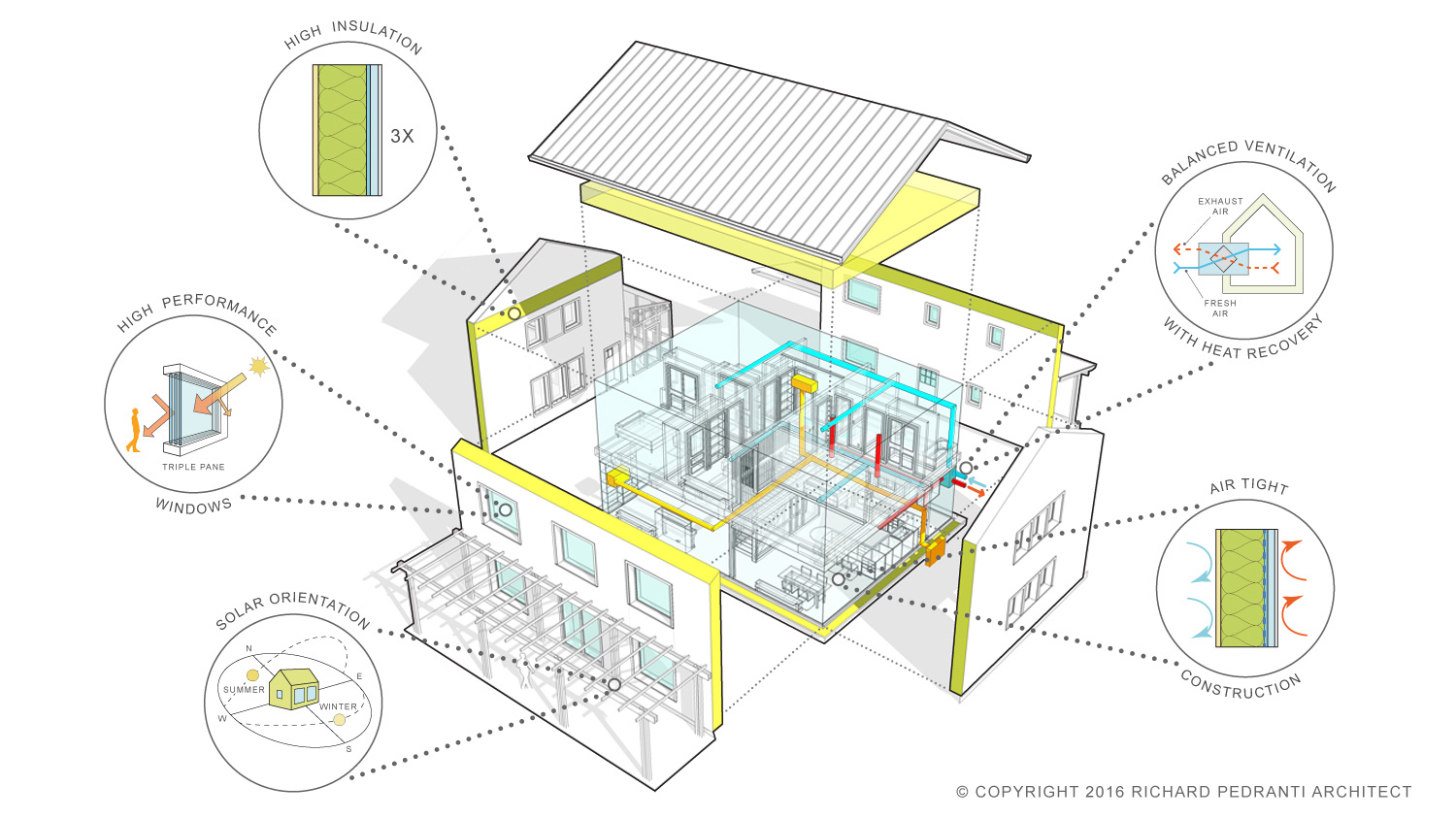





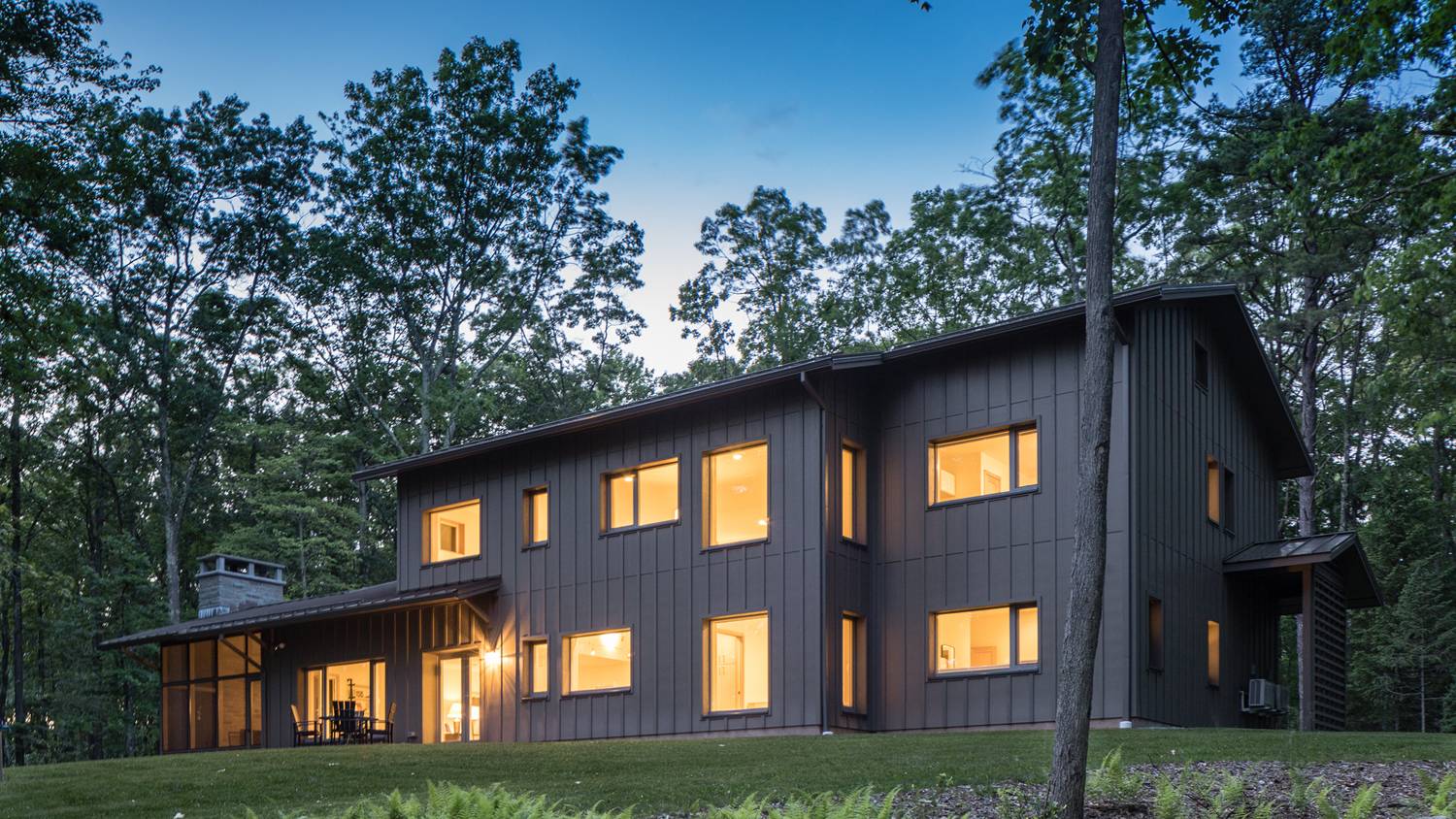



































 “
“ Here’s the math:
Here’s the math: 



